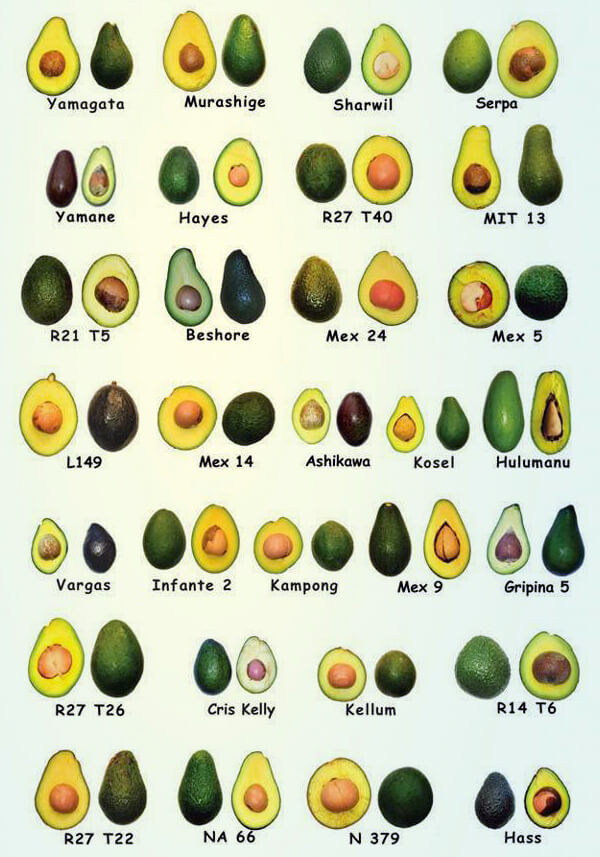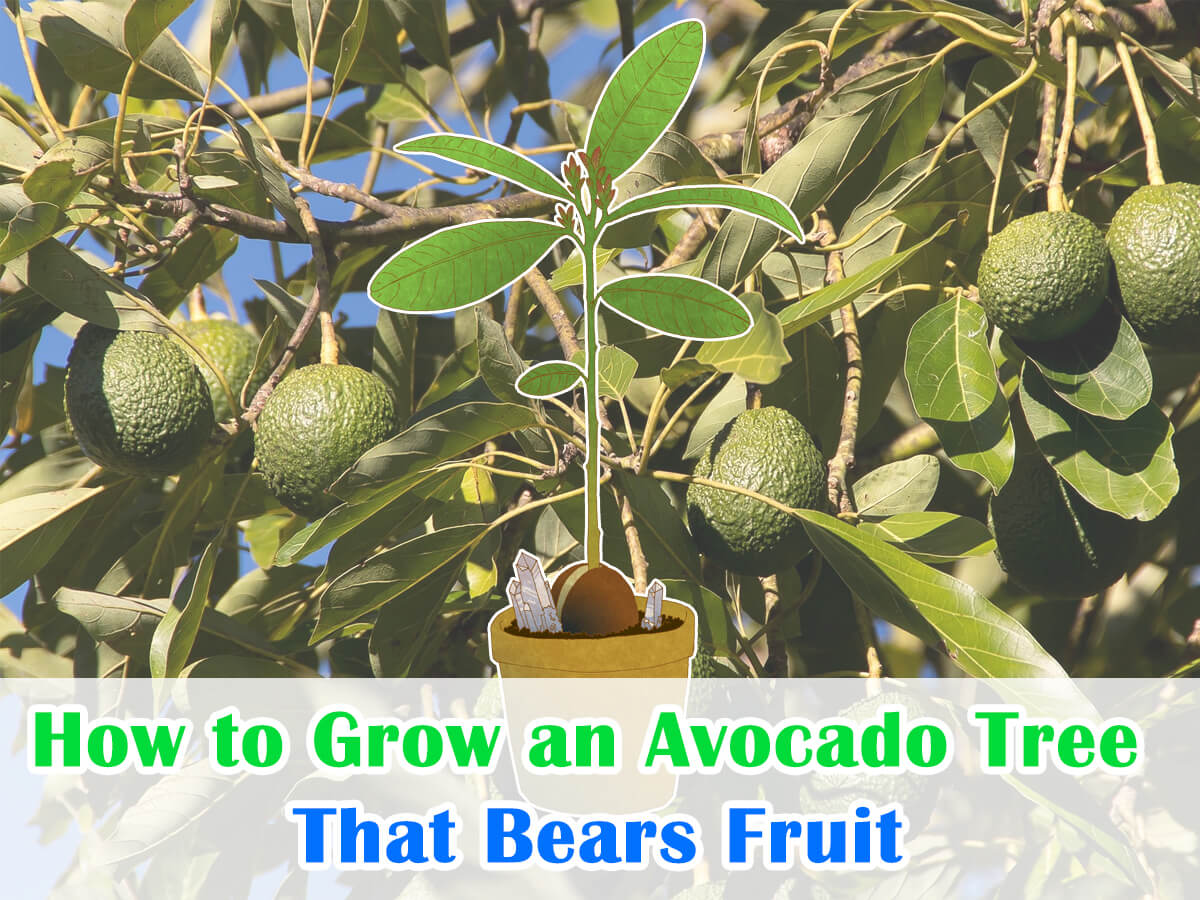I remember the first time I bit into a perfectly ripe avocado; the creamy, buttery texture and the mild, nutty flavor left me mesmerized. Ever since that moment, I’ve been a dedicated avocado enthusiast, and I’m sure many of you share my passion for this delicious fruit.
So, in this article, we will embark on a journey together to learn how to grow an avocado tree that bears fruit. Get ready to roll up your sleeves and get your hands dirty, because we’re about to turn that avocado pit into a beautiful, fruit-bearing tree.
How to Grow an Avocado Tree That Bears Fruit
1. Choose the Right Avocado Seed
Let me tell you a little secret: not all avocado seeds are created equal. Some seeds have a higher chance of sprouting and growing into a healthy tree than others.
When selecting a seed, look for a ripe avocado. To identify a ripe avocado, look for a firm, dark green skin that yields slightly to gentle pressure. The avocado should feel heavy for its size, indicating a healthy seed inside.
When you remove the seed from the avocado, examine it closely for any signs of damage or mold. A healthy seed should be firm and plump, with a smooth, unblemished surface. Don’t use seeds that are cracked, shriveled, or have an off smell: they may not germinate or grow into a healthy tree.
If possible, obtain your avocado seed from a local, organic source. Local seeds are more likely to be adapted to your region’s climate and growing conditions, increasing the chances of success. Organic avocados are less likely to have been treated with chemicals that could affect the seed’s viability.
2. Sprout the Seed Using the Toothpick Method
When I was a kid, I used to marvel at the avocado seed suspended in a jar of water with toothpicks, waiting for it to sprout. It’s a simple and effective method to start growing your avocado tree. Here’s how to do it:
- Remove the seed from the avocado and rinse it thoroughly. Be careful not to remove the brown skin, as it helps protect the seed.
- Identify the top and bottom of the seed. The top is slightly pointier, and the bottom is flatter. The roots will emerge from the bottom, and the sprout will grow from the top.
- Insert three or four toothpicks evenly spaced around the middle of the seed, making sure they’re angled slightly upward.
- Suspend the seed over a glass or jar filled with water so that the bottom third of the seed is submerged. Place the container in a warm, sunny spot, but avoid direct sunlight.
- Be patient and wait for the magic to happen. It may take anywhere from 2 to 8 weeks for the seed to sprout and roots to emerge. Patience is a must when growing any plant from a seed.
Here is a very useful video from TheKiwiGrower that demonstrates this method:
3. Plant Your Avocado Sprout in a Pot
Once your avocado seed has sprouted and developed a sturdy root system, it’s time to plant it in a pot. This was a milestone moment for me, as it meant my avocado tree was well on its way to bearing fruit.
- Choose a well-draining pot that’s at least 10 inches in diameter and has drainage holes. Avocado trees dislike sitting in wet soil, so good drainage is essential.
- Fill the pot with a well-draining potting mix, preferably one that’s rich in organic matter.
- Create a small hole in the center of the potting mix and gently place your avocado sprout into it, with the roots spread out and the top half of the seed exposed above the soil.
- Water the soil thoroughly and place the pot in a sunny location. Ensure that the soil remains consistently moist, but not soggy.
4. Provide Optimal Care
To grow a thriving avocado tree that bears fruit, it’s crucial to provide it with the care it needs. Here are some tips I’ve gathered through trial and error:
- Avocado trees love sunlight, so place your tree in a spot where it gets at least 6 hours of direct sunlight daily.
- Maintain a consistent watering schedule. Over- or under-watering can lead to root rot and other problems. Water the tree when the top inch of soil feels dry.
- Fertilize your tree every two months with a balanced, slow-release fertilizer to provide the necessary nutrients for healthy growth.
For a high-quality avocado tree fertilizer, I suggest getting the Nelson Avocado Tree Plant Food. This specially formulated product is designed to meet the unique nutritional needs of avocado trees, promoting healthy growth and fruit production. With a blend of essential nutrients, including nitrogen, phosphorus, potassium, and essential micronutrients, your avocado tree will receive the nourishment it requires to thrive.
5. Prune and Train Your Avocado Tree
One of the most important aspects of growing a fruitful avocado tree is proper pruning and training. This will help your tree to grow healthy and produce an abundance of fruit.
- Begin pruning your tree when it’s about 12 inches tall by pinching off the top two sets of leaves. This will encourage the tree to branch out and grow bushier, providing a stronger foundation for future fruit production. For this task, you will need pruning shears or snip. I personally use Fiskars Micro-Tip Pruning Snips. They are perfect for trimming delicate branches and shaping your tree with sharp, stainless steel blades, ensuring clean and accurate cuts. The easy-to-use, spring-action design helps reduce hand fatigue, making pruning a breeze.
- As your tree grows, continue to prune it by removing dead or damaged branches, as well as any branches that cross or rub against each other. This promotes good air circulation and prevents disease.
- Train your tree to grow in a balanced, open canopy shape. This will ensure that sunlight reaches all parts of the tree, promoting healthy growth and fruit production.
6. Protect Your Tree from Pests and Diseases
Avocado trees, like any other plant, can be susceptible to pests and diseases. Some common issues to watch out for and how to manage them:
- Root rot: Ensure proper drainage and avoid over-watering to prevent root rot. If you notice yellowing leaves, wilted growth, or a general decline in your tree’s health, root rot may be the culprit.
- Avocado pests: Some common pests that affect avocado trees include aphids, scale insects, and spider mites. Monitor your tree for signs of infestation and treat accordingly with insecticidal soap or horticultural oil.
- Anthracnose: This fungal disease can cause fruit rot and leaf spot. To prevent anthracnose, maintain good air circulation around your tree, remove infected leaves and fruit, and apply a copper-based fungicide if necessary.
How Long for an Avocado Tree to Bear Fruit
Growing an avocado tree that bears fruit takes time and patience. It’s important to remember that, even with the best care, it can take anywhere from 3 to 15 years for an avocado tree grown from seed to produce fruit.
If you’d like to speed up the process, you can opt for a grafted avocado tree from a nursery. Grafted trees generally bear fruit within 3 to 4 years, as they are essentially mature trees that have been grafted onto rootstock.
Overcoming Climate Challenges
Avocado trees thrive in mild, frost-free climates, which is why they are commonly grown in regions like California, Mexico, and parts of South America. If you live in an area with colder winters or extreme heat, you can still grow avocados by taking some extra precautions:
- For cold-sensitive varieties, grow your avocado tree in a large container and bring it indoors during winter months, placing it near a sunny window. This will protect your tree from freezing temperatures and frost damage.
- For areas with hot summers, provide your tree with afternoon shade or use shade cloth to protect it from sunburn and heat stress. Additionally, make sure to water your tree more frequently during hot spells to prevent dehydration.
Growing Avocados in Containers
If you have limited space or want to grow avocados in colder climates, growing them in containers is an excellent option. Here is how it can be done:
- Choose a dwarf or semi-dwarf avocado variety, as these are better suited for container growing.
- Use a large, well-draining container with drainage holes. A container that is at least 15 to 20 inches in diameter is ideal.
- Fill the container with a high-quality potting mix designed for container gardening.
- Follow the same care instructions as you would for an avocado tree grown in the ground, including proper watering, fertilizing, and pruning.
- Move the container to a protected area during extreme weather conditions, such as strong winds, heavy rain, or freezing temperatures.
Exploring Different Avocado Varieties
There are numerous avocado varieties available, each with its unique flavor, texture, and growing characteristics. Some popular varieties include:
- Hass: The most commonly grown variety, known for its creamy texture and rich flavor.
- Fuerte: A pear-shaped variety with a smooth, green skin and a mild, nutty taste.
- Reed: A large, round avocado with a thick, slightly pebbled skin and a buttery, creamy flesh.
- Bacon: A cold-tolerant variety with a smooth, green skin and a light, subtle flavor.
Experiment with different avocado varieties and find the ones that best suit your taste preferences and growing conditions. Plus, growing multiple varieties can help extend your harvest season, as different types of avocados ripen at different times.
Here are a few more avocado varieties to choose from:

Debunking Common Misconceptions About Avocado Growing
Growing an avocado tree can be a rewarding experience, but there are a few common misconceptions that might discourage potential growers or lead to less-than-optimal results. Let’s set the record straight on some of these misconceptions:
Misconception 1: All avocado trees will bear fruit within a few years.
Truth: As mentioned earlier, avocado trees grown from seed can take anywhere from 3 to 15 years to produce fruit. Grafted trees, on the other hand, generally bear fruit within 3 to 4 years. It’s essential to be patient and provide consistent care to ensure your tree’s eventual fruit production.
Misconception 2: Avocado trees can only be grown in warm climates.
Truth: While avocado trees do thrive in mild, frost-free climates, they can also be grown in colder regions with some extra care. Choose a cold-tolerant variety, protect your tree from frost, or grow it in a container that can be moved indoors during the winter. Stick to these methods, and you can successfully cultivate avocados in less-than-ideal climates.
Misconception 3: Avocado trees require a lot of water and are not drought-tolerant.
Truth: Although avocado trees need consistent watering to remain healthy, they are actually quite drought-tolerant once established. Over-watering or allowing the tree to sit in soggy soil can cause root rot and other issues. The key is to strike a balance and provide sufficient water without overdoing it.
Misconception 4: Avocado trees require little to no pruning.
Truth: Regular pruning is crucial for a healthy, fruitful avocado tree. Proper pruning promotes air circulation, prevents disease, and encourages a strong, balanced canopy that supports fruit production. Neglecting to prune your tree can lead to poor fruit yields and an unhealthy tree.
Final Words
In conclusion, growing an avocado tree that bears fruit is a rewarding, albeit time-consuming endeavor. By following the steps outlined above and providing consistent care, you’ll be well on your way to enjoying the fruits of your labor. And when you finally taste that first homegrown avocado, I promise you, it will be a moment you’ll never forget.
Happy growing!



